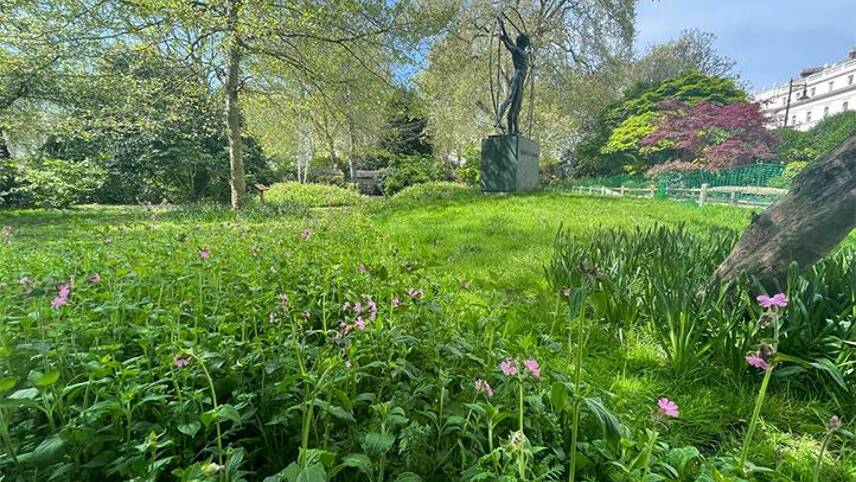Register for free and continue reading
Join our growing army of changemakers and get unlimited access to our premium content

Grosvenor will turn to living roofs, wildflower rich grassland and wildlife friendly planting as measures to help deliver this aim
The company has this week unveiled its biodiversity strategy, which commits the organisation to “building biodiverse communities” through new measures.
The company has committed to delivering a “significant biodiversity net gain” across all new developments and existing assets by 2030. This will be measured against a 2021 baseline.
Additionally, each of Grosvenor’s UK property business areas has specific targets in place that contribute to a goal of delivering a 20% increase in biodiversity on managed green spaces and a 100% increase on developments by 2030 using DEFRA’s Biodiversity Metric 3.0.
Grosvenor will turn to living roofs, wildflower rich grassland and wildlife friendly planting as measures to help deliver this aim.
The company’s executive director of sustainability and innovation Tor Burrows said: “Biodiversity and the management of urban places are often seen as two separate fields, but we know that this shouldn’t be the case. Humans have an intrinsic link with the natural world no matter where they live and work.
“We believe urban areas can once again become nature-rich through biodiversity strategies and targets like ours, bringing a myriad of benefits for nature, communities and cities. We’re looking forward to reporting on our progress and learnings annually, supporting biodiversity in the built environment and ensuring that our work has measurable and positive impacts on people and the planet.”
Net-zero
The firm announced in December 2020 that it is striving to become a net-zero business by 2030, with the target applying to emissions across all scopes.
Given that Grosvenor’s historic London estate in Mayfair and Belgravia is its main source of direct emissions, the company is targeting a 70% reduction in annual emissions here by 2030, against a 2019 baseline. It will invest in deep retrofits to make these buildings more energy-efficient, installing things like insulation, low-carbon heating and energy-efficient lighting.
Grosvenor notably manages more than 2,500 units in this area, including 500 Grade I and II listed buildings and structures. It has spent £25m on retrofitting for more than 100 buildings since 2013 and hopes the larger sum will accelerate progress. All managed buildings with tenants will also be transitioned to 100% renewable electricity.
A target has also been set to ensure that all new buildings are net-zero in operational carbon by 2030. Like many businesses in the UK’s built environment sector, Grosvenor is also increasingly focusing on embodied carbon as well. It is aiming for all construction projects to meet a maximum of 500kgCO2e/m2 by 2025.
At the time, it promised more information on the use of carbon offsetting by the end of 2021. Grosvenor has since revealed that, while it had planned to begin offsetting in 2025 and reach carbon neutrality in 2030, an offsetting strategy will now be activated sooner.
In a statement, the business said that “absolute emissions reduction remains the priority”. Grosvenor’s net-zero commitment is bolstered by a pledge to reduce operational emissions by 52% by 2030, against a 2019 baseline. By 2025, a representative told edie, a 29% reduction against the same baseline is expected. A 20% reduction has already been achieved.


Please login or Register to leave a comment.